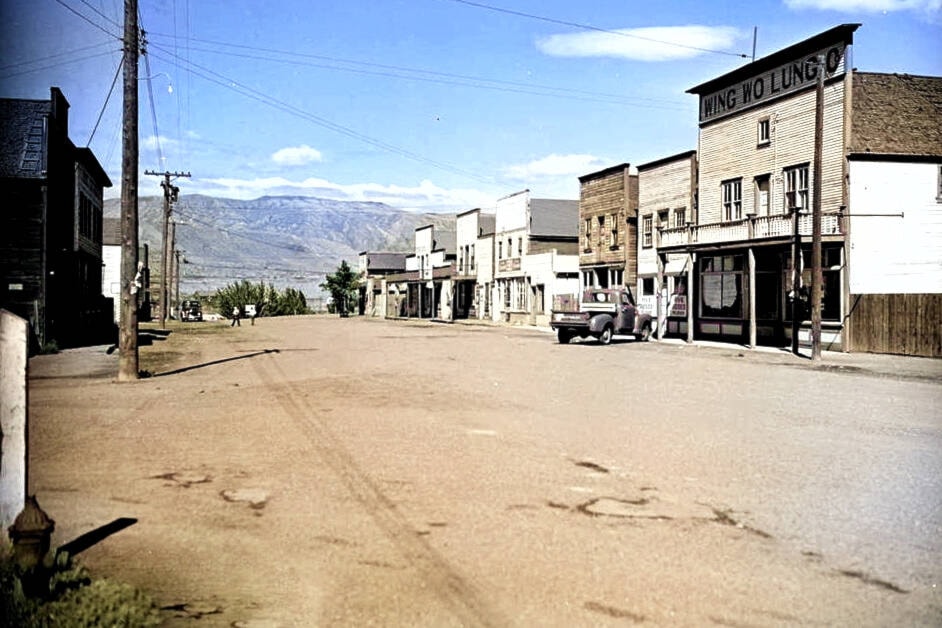You might have seen the colourized pictures of Ashcroft that appeared on social media recently, where a handful of historical black-and-white photos were digitized to show them in colour. They were greeted with many admiring comments, and the admiration was well-deserved, particularly because technically they showed the vast improvement that has been made in that area over the years.
Colourized versions of black-and-white pictures aren’t new; I’ve seen many efforts over the years, particularly from the 1960s, when it was the fashion to make old pictures look “up to date” by adding colour to them, often for use as postcards. In the 1980s, media mogul Ted Turner acquired the film library of MGM Studios and (controversially) took some of their classic black-and-white films and colourized them, which earned the outrage of actors, directors, and film lovers.
The move prompted others to try their hand at colourizing old films, usually ones that had fallen out of copyright and had no protection. I only saw one of these efforts, one of the Sherlock Holmes films starring Basil Rathbone and Nigel Bruce from the 1940s. To say it was disappointing would be an understatement: the entire colour palette seemed to consist of shades of brown and a sickly yellow, making the film look as if someone had spilled weak tea on the negative.
Perhaps that explains why a colourized film starring Frank Sinatra — Old Blue Eyes himself — gave the actor brown eyes. Jimmy Stewart said in an interview that he had only been able to watch a few minutes of a colourized version of It’s a Wonderful Life, in which he starred, as the poor colourization wiped out all the shadows and textures, light and shade, that the cinematographer had tried to capture when the film was originally shot in black-and-white.
I’ve watched enough old films that the lack of colour doesn’t usually even register. An exception was the other night, when 1953’s Roman Holiday aired on TCM. (Praise where it’s due: TCM stands for Turner Classic Movies, and was the brainchild of the aforementioned Ted Turner, so movie lovers owe him a huge debt of gratitude for giving them a place where classic films can be celebrated. Famously, TCM presents movies as they were originally meant to be seen, so you won’t find any colourized films there.)
Those who are familiar with Roman Holiday, which stars Gregory Peck and an incandescent Audrey Hepburn, who won the Best Actress Oscar for her turn as a wayward princess on the lam, will know how wonderful it is. Those who don’t know the film have a treat in store, should they ever come across it, as it’s a delight from start to bittersweet finish. It was filmed entirely on location in Rome, and I couldn’t help but think that it’s one of the few black-and-white films that I would dearly love to have seen in colour, to take full advantage of the sets and costumes.
Unlike in the 1980s, when the necessary technology was still pretty crude, a pretty good job of colourizing it could probably be done today, but I hope no one is tempted. After all, much of the colour would be someone’s best guess, not an accurate representation, and I suspect I’d find myself wondering how right they’d got everything.
Which brings us back round to those pictures of Ashcroft, the colours of which are likewise someone’s best guess. Fortunately, it’s easier to get close to being right in a still picture than in a film, and there’s nothing jarring in the ones that have merely been colourized, nothing that sticks out like brown eyes in an actor famous for having blue ones. They’re an intriguing novelty, a fun new way of seeing old things, and if they make people who usually ignore black-and-white pictures stop and take a closer look then that’s a good thing. Besides, the original pictures still exist; as the song says, they can’t take that away, from me or anyone else.
